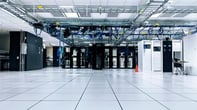Published on
Agility in a Time of Crisis

As COVID-19 keeps everyone off campus, colleges and universities are looking to deliver an effective remote learning environment. The current circumstances create a unique set of challenges for all divisions in postsecondary institutions but especially for those with fewer resources and more diverse stakeholders. In this interview, Michelle Giovannozzi discusses how the Center for Executive and Professional Education (CEPE) has been reacting to the outbreak, how they’ve been helping Portland State University navigate it, and what we can all learn from this education shift.
The EvoLLLution (Evo): How is CEPE working to address some of the challenges presented by the COVID-19 pandemic for both its learners and the rest of the school of business.
Michelle Giovannozzi (MG): CEPE’s approach is evolving daily, and assessing how well we’re adapting depends on whether you’re looking at it from a tactical or strategic standpoint. We’re trying to model for our stakeholders that we’re all in this together, that we’re agile and can adapt and change rapidly to meet current needs. Despite what’s going on, people still need professional development; they want to improve their careers. This provides CEPE with an opportunity to collaborate and work on positive, constructive solutions in a really uncertain time.
Evo: What are some of the evolved roles that CEPE is taking on to help the School of Business (as well as the rest of the university) adapt to this new normal?
MG: CEPE plays multiple roles, but our key areas of influence are challenging traditional models and innovating learning delivery. Because we offer non-credit programs, we can respond to the market with more agility in real-time. One way we’re doing that is by keeping in touch with our open enrollment students and custom education client companies. We’re identifying their current needs and requests. We’re adapting our classes to remote delivery. We’re learning that by being creative, we can still maintain a quality of program delivery and impact that meets learners’ needs while sustaining revenue.
Approximately 90% of our public certificate programs were previously delivered in person. When the university announced it was moving all live winter courses online, we had to transition very quickly to remote delivery. We were able to do so in one week without missing class sessions or shifting dates. Now, we’re focusing on moving spring courses—about 47 courses–to a remote format before they are scheduled to start in just a couple of weeks. Some of those classes have a physical, in-person evaluation that doesn’t lend itself to remote delivery, but for the most part, we’ve been able to maintain course quality and student engagement.
Evo: How is everyone adapting to this new normal of remote learning and remote work?
MG: A lot of the adaptation has been reflective of typical change management processes and techniques. CEPE’s initial response was that we’re used to delivering programs in person, and since we can’t convene students in our classrooms, we can’t teach. But after some discussion, we flipped our mindset and said, “Let’s look at what we can do”. The staff opened their minds and got innovative. We then reached out to our instructors asked what thought they could do on their end, what creative solutions they had thought of for teaching classes remotely. What we learned is that collaborative problem-solving between CEPE staff and faculty/instructors can be very rich. This partnership resulted in achieving solutions much more quickly than we anticipated.
Creativity can be quite engaging and energizing. We thought students might panic and drop or be unwilling to shift to online delivery, but they were open to it, and we’ve seen very few cancellations. Students have been very forgiving, understanding and appreciative of the opportunity to continue learning and engaging in constructive ways.
Evo: Why are some institutions able to adapt smoother than others?
MG: Institutions of higher learning have been wedded to traditional models of education and their historic role in society. The paradigm has been predicated on the structure, expertise, and modality of formal degree programs. Some institutions have been more progressive than others and had already shifted to online programs and alternate credential models before the outbreak. Up to now, there hadn’t been as much pressure or an urgency to force us out of that model. But the current situation is making everybody stand back, take a look, and say, “Hey, we can’t just hold onto the parameters that we’re used to”. We need to see what we can do differently to adapt to the now. The pandemic has accelerated the cycle of change.
From an HR perspective, the human element of teams and leadership has become more important. When everyone’s united in a crisis like this together, it’s even more necessary to be aware of how the ensuing changes impact individuals. What anxieties or insecurities are people feeling and how are they dealing with ambiguity? How can a leader work with those dynamics to support their staff? How can everyone work together to build a stronger team that supports each other and provides some stability and constancy in a highly uncertain time? Institutions that are able to manage the human element of change well will adapt more smoothly to the new paradigm.
Evo: Do you see some of these responsive changes being adopted into regular practice once things go back to “normal”?
MG: I do. We’re entering a duality in terms of education—one is an informal, organic, often corporate-delivered learning outside of traditional institutions of higher education and the other is a continuation of traditional university models. I think what we’re going to see moving forward is a blending of those two approaches, landing somewhere in the middle. Everyone will benefit from the combination of in-person interaction and technology-driven learning. We will further combine formal teaching and informal, organic learning because the current situation is forcing us to combine tools, leading us to experience benefits that we didn’t recognize before. When we move past COVID-19, we’ll have a chance to stand back and reflect on this a little bit. My hope is that universities will take elements from both the past and present and combine them in a way that brings richer learning to all students.
Evo: How are you communicating effectively with organizations to ensure folks have access to the programming that they need?
MG: We’ve made relationships with our stakeholders a priority, particularly those with students and client companies. We have an internal staffer managing our business partnerships. His goal is to build, maintain and cultivate those relationships. We’ve been touching base with each organization and informing them of our plans while asking them how they are doing and what they need. It’s a high-touch, high-support, high-customer-service approach, and we’re taking the same one with our students.
We are working to be more flexible, more understanding and more human, realizing people are facing obstacles they may not have encountered before. Students without childcare may not be able to focus on a class, or those who have lost their job may not be able to pay their tuition. We are taking all of those considerations into account and finding creative solutions that meet student needs. We’ve been reaching out and saying, “We’re here, we’re your partner. We want to support you, too.” We are letting them use us as a resource and helping in any way that we can.
Evo: Are there elements that have surprised you about the reactions to the COVID-19 crisis?
MG: From a more global perspective, it’s been interesting to see similarities and differences among higher learning institutions. Some universities quickly shifted to delivering remotely or canceling in-person classes. Others delayed while waiting for more information. Some have decided to offer a pass/fail option. There’s been a lot of variety from university to university. Some of that has to do with the level of uncertainty we’re facing and the limited information at our disposal to inform those decisions.
I’ve been pleasantly surprised to see that when a team faces new challenges, it can really pivot focus, collaborate on creative solutions and, in some ways, be stronger than they were before. CEPE has always focused on quality, but the COVID-19 crisis has shown us that you can have quality even if you’re not operating to plan. The balance between quality and access can shift more situationally than we would have thought before.
Evo: What are a few of lessons about disaster preparedness that you’ve taken from this experience so far?
MG: We were caught off guard by the amount of technology we already had in place versus the technology we needed to move to a 100% remote workforce. We hadn’t made provisions for every employee to have a workspace fully equipped for remote work since the need for it had not been there. So, thinking more proactively about emergency preparedness and the equipment needed in a time of crisis would be helpful. It’s also about leaning into your team in a time of crisis, encouraging them to think outside the box to find creative adaptations and solutions. At the same time, leaders need to be aware and supportive of the personal and emotional impacts of a crisis. They should give their people time and space to process the disaster. To prepare for this situation, we should develop our crisis leadership skills, so we are prepared to support our teams through a disaster before it happens.
It’s also important to have a communication plan in place in the event that the team is not working together in the same workspace. We had protocols for communication, but we didn’t necessarily have a crisis communication plan with the level of granularity needed, and that would have been really helpful.
This interview has been edited for length and clarity.
Editor’s Note: this interview was recorded Tuesday, March 24.


